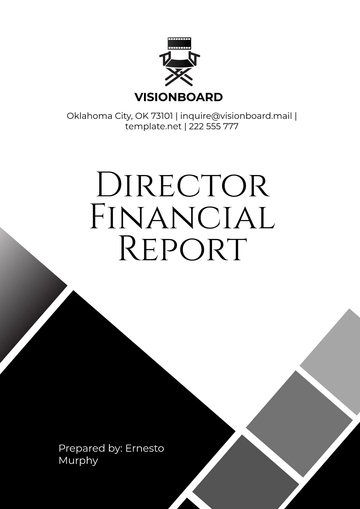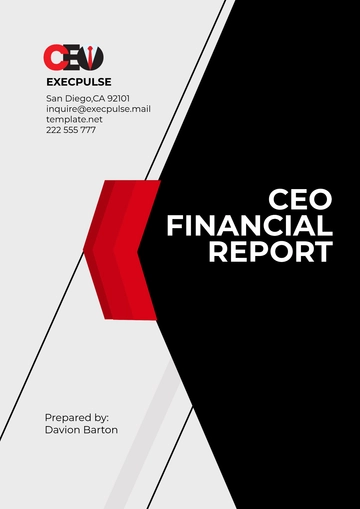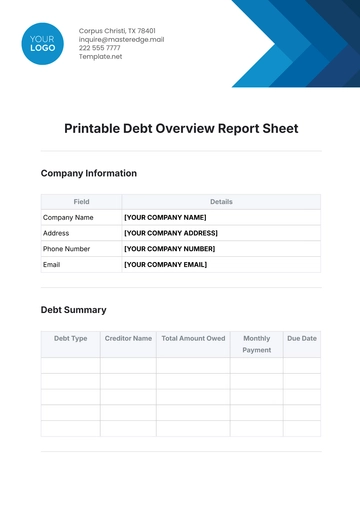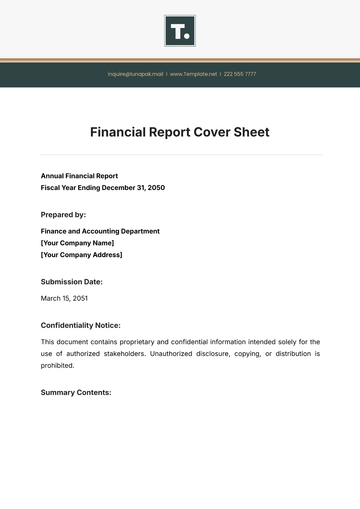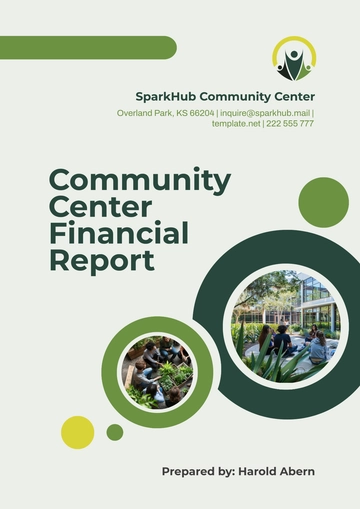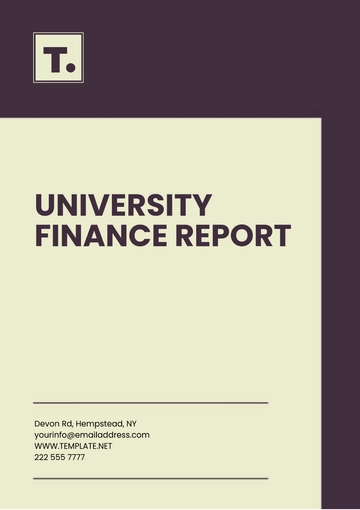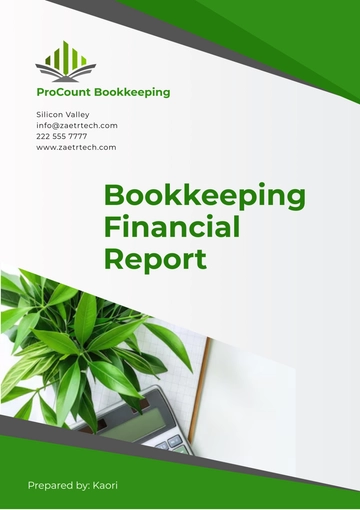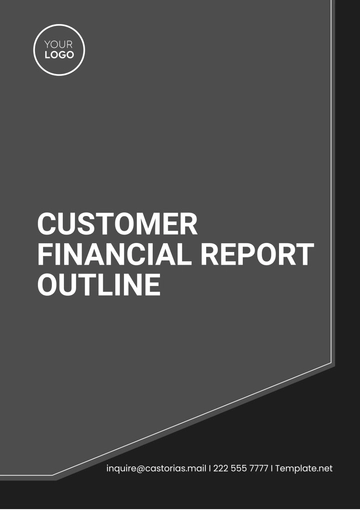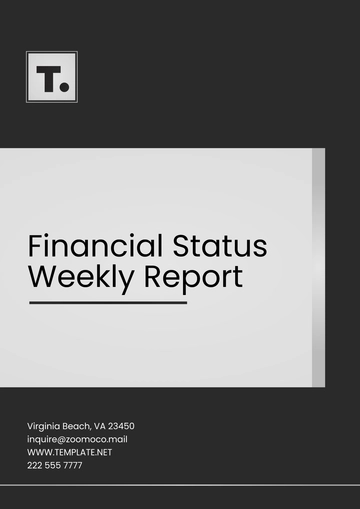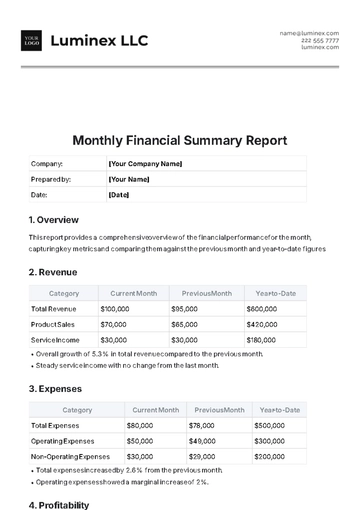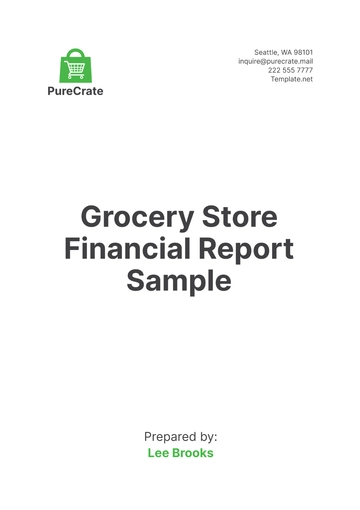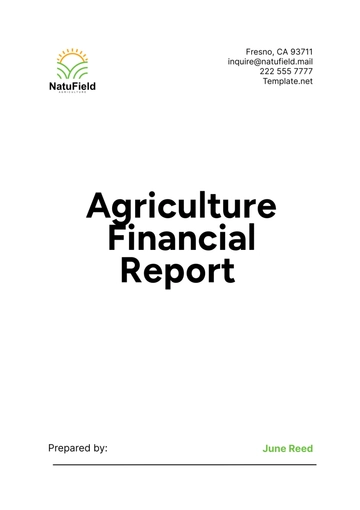Free Financial Reporting Case Study
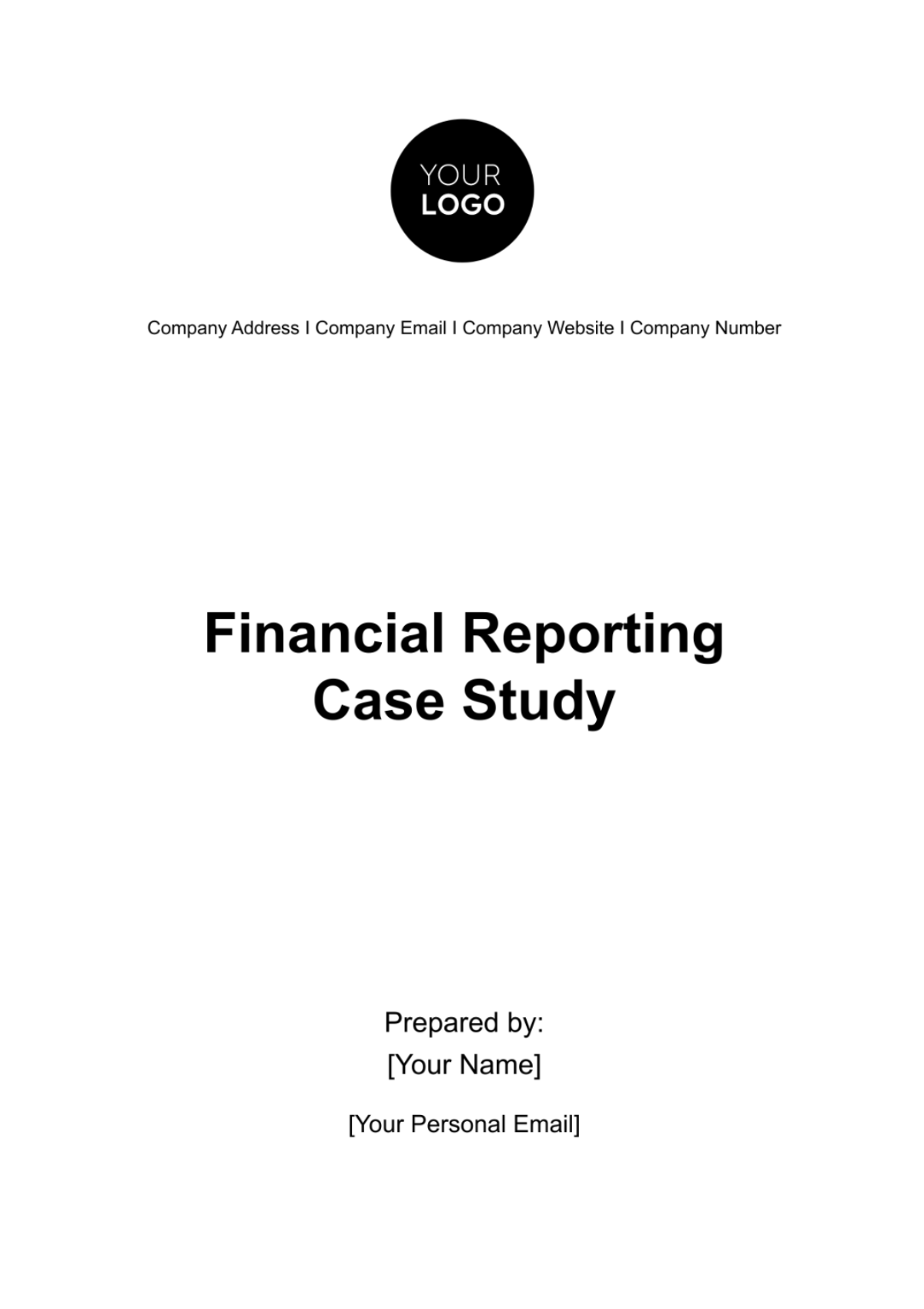
I. Introduction
A. Background
Our company, a pivotal player in the dynamic technology sector, has experienced remarkable growth in recent years. Operating on a global scale, we confront challenges such as heightened competition, rapid technological advancements, and market volatility. These factors form the backdrop against which our financial reporting practices are examined.
B. Purpose
This study aims to comprehensively analyze our organization's financial performance and reporting strategies. The study seeks to provide a nuanced understanding of our company's financial health and the transparency of our practices.
II. Industry and Company Overview
A. Technological Landscape
The technology industry is characterized by a constant pace of innovation, shifting consumer preferences, and intense competition. Our organization thrives in this environment, leveraging a robust research and development framework to stay at the forefront of technological advancements.
B. Company Profile
Established in [Year], we specialize in developing and distributing cutting-edge software solutions and electronic devices. With a diverse product portfolio, we strategically cater to both consumer and enterprise markets, ensuring a resilient market presence.
C. Market Trends
Understanding market trends is crucial for assessing our financial performance. Industry reports signal a notable shift towards cloud-based solutions and a growing demand for sustainable technology practices. These trends influence not only consumer behavior but also shape our strategic decisions and subsequent financial outcomes.
D. Regulatory Environment
Given our global operations, navigating a complex regulatory landscape is integral. Compliance with international accounting standards and regulations is not just a legal obligation but a cornerstone of transparent and accurate financial reporting.
E. Competitive Landscape
Operating in a highly competitive arena, we contend with both established industry players and agile startups. Rigorous analysis of market share dynamics, pricing strategies, and product differentiation is indispensable for a precise assessment of our competitive position and understanding potential impacts on financial performance.
F. Recent Developments
Exploring recent industry and company-specific developments is crucial for contextualizing our financial results. Notable events such as mergers, acquisitions, or strategic partnerships can have profound implications for our financial reporting and overall organizational performance.
III. Financial Statements Analysis
A. Financial Performance Overview
The table provides a snapshot of our financial performance:
Metric | [Past Year] | [Current Year] | Change |
Revenue | $10,500,000 | $12,200,000 | +16.19% |
Net Income | |||
Earnings Per Share |
The increase in revenue signifies the robust demand for our products or services, while the rise in net income underscores operational efficiency and cost-effectiveness. Furthermore, the growth in earnings per share enhances shareholder value, portraying a favorable outlook for investors.
B. Liquidity and Solvency Ratios
The following table showcase the pivotal indicators of our financial health:
Ratio | [Past Year] | [Current Year] | Benchmark |
Current Ratio | 2.2 | 2.5 | >1.5 |
Quick Ratio | |||
Debt-to-Equity Ratio |
The current ratio above the benchmark signifies our capacity to cover short-term obligations comfortably, ensuring operational stability. The quick ratio reinforces our liquidity position, indicating our ability to meet immediate financial commitments. Moreover, a debt-to-equity ratio below the benchmark reflects responsible debt management, instilling confidence in investors and creditors.
C. Cash Flow Analysis
The table below breaks down our cash flow components, illustrating changes in operating, investing, and financing activities:
Cash Flow Component | [Past Year] | [Current Year] | Change |
Operating Cash Flow | $4,500,000 | $5,200,000 | +15.56% |
Investing Cash Flow | |||
Financing Cash Flow |
Positive operating cash flow signifies our ability to generate cash from core business operations, ensuring our self-sustainability. Understanding changes in investing and financing activities guides strategic decisions, ensuring a balanced approach to capital expenditures and debt management. This comprehensive analysis promotes transparency, aids in making informed financial decisions, and fosters a robust foundation for sustainable growth.
IV. Accounting Policies and Methods
A. Overview of Accounting Policies
Our accounting policies lay the foundation for accurate financial reporting. Consistency and adherence to Generally Accepted Accounting Principles (GAAP) are observed ensuring transparency and comparability across financial periods.
B. Changes in Accounting Policies
Policy Evolution
Over the past year, there have been noteworthy changes in our accounting policies. These changes primarily revolved around revenue recognition and depreciation methods.
Rationale for Changes
The modifications were driven by the need to align our accounting practices with evolving industry standards and ensure a more accurate representation of our financial position.
V. Management Discussion and Analysis (MD&A)
A. Financial Performance
Revenue Trends
Our revenue witnessed a robust growth of 15%, primarily driven by increased market demand for our flagship products. This surge is in line with industry projections and reflects our successful market positioning.
Cost Management
A stringent focus on cost management strategies resulted in a 10% reduction in operating expenses. This deliberate effort contributed significantly to bolstering our bottom line and enhancing overall profitability.
Investment in Research and Development
The allocation of resources to research and development increased by 20%, underscoring our commitment to innovation. This strategic investment is anticipated to yield long-term benefits by ensuring our product portfolio remains competitive.
B. Market Dynamics and Competitive Landscape
Market Trends
An in-depth analysis of market dynamics reveals evolving consumer preferences and emerging trends. This insight positions us to capitalize on opportunities and navigate potential challenges effectively.
Competitive Positioning
Despite increased competition, our organization maintained a strong competitive position. A focus on product differentiation and customer-centric strategies contributed to our ability to capture and retain market share.
VI. Critical Accounting Estimates
A. Identification of Key Estimates
Depreciation Estimates
Rigorous scrutiny ensures that our depreciation estimates align with the economic reality of our assets. We consider industry benchmarks and historical performance to determine the useful lives and residual values of our assets.
Allowance for Doubtful Accounts
The evaluation of the allowance for doubtful accounts involves a meticulous review of customer payment patterns. We consider economic indicators, creditworthiness assessments, and historical trends to gauge the potential impact on receivables accurately.
B. Proactive Measures
Adjustments
Proactive adjustments are made based on various scenarios to enhance our adaptability to evolving economic conditions and business dynamics. These adjustments contribute to the accuracy and relevance of our financial reporting.
Sensitivity Analysis
Conducting sensitivity analyses allows us to explore a spectrum of potential outcomes, providing a comprehensive understanding of the potential impact of uncertainties associated with critical accounting estimates.
VII. Risks and Uncertainties
A. Identification of Key Risks
Market Volatility
The industry we operate in is susceptible to market fluctuations. Volatility in commodity prices and currency exchange rates poses a risk to revenue and profitability. Our risk mitigation strategy involves hedging and diversification.
Regulatory Environment
Rapid changes in the regulatory landscape present a significant risk. Our proactive approach includes continuous monitoring, engagement with regulatory bodies, and adapting internal processes to comply with evolving regulations.
B. Mitigation Strategies
Diversification of Revenue Streams
To counter the impact of market volatility, we actively pursue diversification strategies, exploring new markets and product offerings to minimize dependence on a single revenue source.
Comprehensive Compliance Programs
Robust compliance programs are in place to navigate the complexities of the regulatory environment. Regular audits, training programs, and a dedicated compliance team ensure adherence to evolving legal requirements.
VIII. Corporate Governance
A. Governance Structure
Board Composition
Our board composition is designed for diversity and expertise, ensuring a balanced mix of industry knowledge and governance experience. This fosters effective decision-making and strategic oversight.
Committee Framework
We have established specialized committees such as the Audit Committee and Governance Committee. These committees play a pivotal role in ensuring transparency, risk management, and adherence to corporate governance principles.
B. Ethical Standards and Integrity
Code of Conduct
Our organization upholds a stringent Code of Conduct, emphasizing ethical behavior, integrity, and responsible corporate citizenship. Regular training sessions and awareness programs are conducted to reinforce these principles.
Whistleblower Mechanism
To encourage a culture of openness, a confidential whistleblower mechanism is in place. This provides employees and stakeholders a secure channel to report any unethical practices or concerns without fear of reprisal.
C. Stakeholder Engagement
Regular Stakeholder Dialogue
We engage in regular dialogue with stakeholders, including shareholders, employees, and customers. This ensures their perspectives are considered in decision-making processes, enhancing transparency and accountability.
Sustainability Initiatives
Sustainable practices are integrated into our corporate governance framework. From environmental stewardship to social responsibility, our commitment to sustainability aligns with long-term value creation and ethical corporate behavior.
IX. Recommendations
A. Financial Performance Optimization
Cost Efficiency Measures
Implementing further cost efficiency measures, such as streamlining operational processes and leveraging technology, can contribute to sustained profitability and improved margins.
Revenue Diversification
Expanding revenue streams through diversification, exploring new markets or product lines, can mitigate the impact of market volatility and enhance overall business resilience.
B. Risk Mitigation Strategies
Enhanced Risk Monitoring
Strengthening our risk monitoring mechanisms, including the use of advanced analytics and real-time tracking, can bolster our ability to respond swiftly to emerging risks and capitalize on opportunities.
Scenario Planning
Investing in robust scenario planning can aid in preparing for various contingencies. Simulating potential risks and developing response strategies will enhance our resilience in dynamic market conditions.
C. Corporate Governance Enhancements
Board Diversity Initiatives
Actively pursuing initiatives to enhance board diversity ensures a broader spectrum of perspectives and expertise, contributing to more effective governance and decision-making.
Stakeholder Engagement Enhancement
Strengthening our stakeholder engagement initiatives, including more inclusive feedback mechanisms, can deepen our understanding of stakeholder concerns and expectations, fostering a stronger relationship with our diverse stakeholder base.
D. Continuous Improvement in Financial Reporting
Advanced Reporting Tools
Investing in advanced reporting tools and technologies can enhance the efficiency and accuracy of financial reporting, facilitating more dynamic and insightful presentations of financial data.
Training Programs for Financial Teams
Conducting regular training programs for our financial teams on evolving reporting standards and best practices ensures a consistent and high standard of financial reporting across the organization.
E. Sustainable Practices Integration
Eco-Friendly Initiatives
Integrating additional eco-friendly initiatives into our business operations demonstrates our commitment to sustainability, aligning with broader environmental and social responsibility goals.
CSR Program Expansion
Expanding our Corporate Social Responsibility (CSR) programs can further enhance our reputation and brand value, contributing to long-term stakeholder trust and loyalty.
X. Conclusion
The study underscores the organization's commitment to transparency, sound governance, and strategic financial management. Through a meticulous examination of financial performance, critical accounting estimates, risks, and governance practices, we have gained valuable insights into the strengths and areas for enhancement. The proactive recommendations presented aim to optimize financial performance, fortify risk resilience, and elevate corporate governance standards. As we embark on the implementation of these strategies, we are poised for a future marked by sustained growth, strengthened stakeholder relationships, and continued adherence to the highest ethical and reporting standards. This study serves not only as a retrospective analysis but as a guiding framework for the organization's journey toward excellence in financial reporting and corporate stewardship.
- 100% Customizable, free editor
- Access 1 Million+ Templates, photo’s & graphics
- Download or share as a template
- Click and replace photos, graphics, text, backgrounds
- Resize, crop, AI write & more
- Access advanced editor
Highlight your financial prowess for informed decision-making! Financial reporting simplified with the customizable Financial Reporting Case Study Template from Template.net! This editable and versatile template transcends the ordinary, offering a customizable format to showcase your reporting successes. Effortlessly edit and customize your case study using the intuitive AI Editor Tool!
You may also like
- Sales Report
- Daily Report
- Project Report
- Business Report
- Weekly Report
- Incident Report
- Annual Report
- Report Layout
- Report Design
- Progress Report
- Marketing Report
- Company Report
- Monthly Report
- Audit Report
- Status Report
- School Report
- Reports Hr
- Management Report
- Project Status Report
- Handover Report
- Health And Safety Report
- Restaurant Report
- Construction Report
- Research Report
- Evaluation Report
- Investigation Report
- Employee Report
- Advertising Report
- Weekly Status Report
- Project Management Report
- Finance Report
- Service Report
- Technical Report
- Meeting Report
- Quarterly Report
- Inspection Report
- Medical Report
- Test Report
- Summary Report
- Inventory Report
- Valuation Report
- Operations Report
- Payroll Report
- Training Report
- Job Report
- Case Report
- Performance Report
- Board Report
- Internal Audit Report
- Student Report
- Monthly Management Report
- Small Business Report
- Accident Report
- Call Center Report
- Activity Report
- IT and Software Report
- Internship Report
- Visit Report
- Product Report
- Book Report
- Property Report
- Recruitment Report
- University Report
- Event Report
- SEO Report
- Conference Report
- Narrative Report
- Nursing Home Report
- Preschool Report
- Call Report
- Customer Report
- Employee Incident Report
- Accomplishment Report
- Social Media Report
- Work From Home Report
- Security Report
- Damage Report
- Quality Report
- Internal Report
- Nurse Report
- Real Estate Report
- Hotel Report
- Equipment Report
- Credit Report
- Field Report
- Non Profit Report
- Maintenance Report
- News Report
- Survey Report
- Executive Report
- Law Firm Report
- Advertising Agency Report
- Interior Design Report
- Travel Agency Report
- Stock Report
- Salon Report
- Bug Report
- Workplace Report
- Action Report
- Investor Report
- Cleaning Services Report
- Consulting Report
- Freelancer Report
- Site Visit Report
- Trip Report
- Classroom Observation Report
- Vehicle Report
- Final Report
- Software Report



